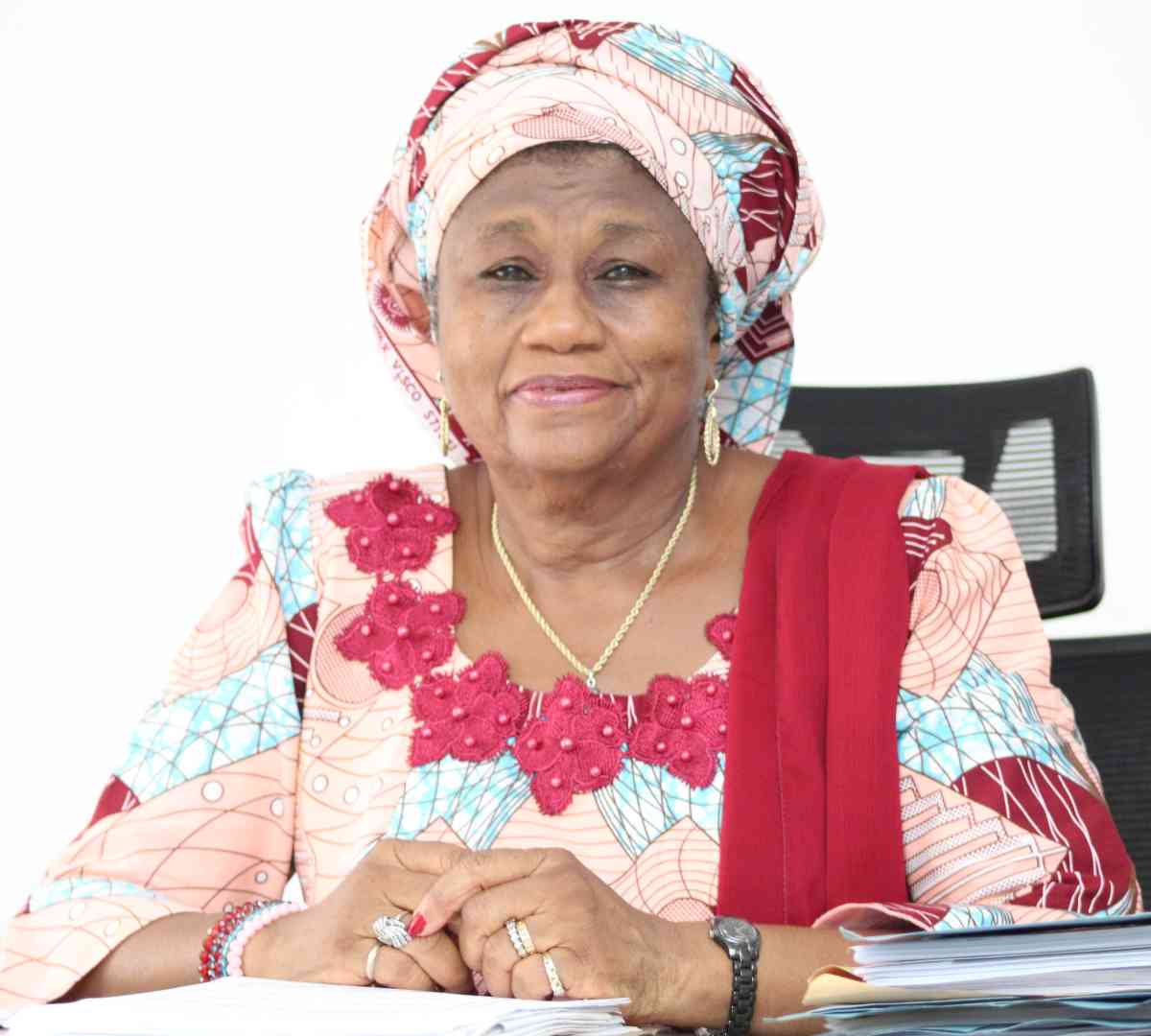The Chair of Kaduna State Independent Electoral Commission (SIECOM), Dr SARATU BINTA DIKKO AUDU is first amongst equals, having successfully held the only technology-driven election in Nigeria. In the interview below, she spoke about how she conducted the first electronic voting in the country.
Kaduna State pioneered electronic voting in Nigeria two years ago. In retrospect, what motivated the State Independent Electoral Commission (SIECOM) to chart that course?
When we came on board as a commission, Governor Nasir Ahmad El-Rufai told us that he wanted electronic voting to be used, he wanted technology to be introduced to the voting process and elections. At that time, we thought that all he meant was for us to use the Smart Card Reader that had been used for national elections. So, we thought that he wanted us to use it at the local government level. But he said no, he wanted to go all the way. He wanted people to vote electronically, and technology should be deployed in the election. We took up the challenge and began to look at what kind of machine do we develop that will serve us during the local government election. We did a little research, looked at what was happening around the world, what other countries were doing, especially those that have gone electronic. We developed our own model of what we wanted to use and that was how we came about the Electronic Voting Machines that we used in the 2018 election.
Which specific country did you use as a model, in your effort to reinvent the wheel, by starting electronic voting system in Nigeria?
We didn’t choose any particular country, we looked at the deployment of technology in voting in various countries, we looked at the United States and we looked at Brazil; Brazil being a third world country like us. We know that other countries also use electronic voting. In Africa, Mozambique was the first country to deploy technology to that level in their election. So, we looked at what Brazil has done, which was at that time on the same economic scale as Nigeria. Of course, the United States is way ahead of us. So, we looked at what will work for us. It’s a very simple machine.
Some lawyers said that you broke the law by using electronic voting to conduct the election. According to them, neither the 1999 constitution nor the Electoral Act permits the use of electronic voting. Did your action have any legal backing?
We didn’t break the law, we worked perfectly within the law. The constitution allows states to determine the method of election at the local government level and I believe those lawyers know the constitution very well. On the basis of that, we went to the state House of Assembly to seek for a law to be formulated to enable us use technology and the electronic voting machine in our election. So, we didn’t break any law; we were perfectly within the law. I’m sure our governor will not allow us to break any law.
Considering the fact that the Electronic Voting Machine (EVM) is a new technology, coupled with the low literacy rate in our society, was enough time provided to demonstrate how the machine works?
We gave a lot of time for sensitization. We did sensitisation at the state, local government and ward levels without the Electronic Voting Machine. We did another sensitization at state, local government and ward levels with the EVM. We allowed people access to the EVM for three days in every ward, for them to try it out, play around with it and see how it works. Like I said, it is a very simple machine; voters were very excited about the EVM. We under rate Nigerians but Nigerians are very intelligent people. Nigerians are so intelligent that even a grandmother in the village operates a smart phone and that is as simple as the machine is. All you need to do is press buttons.
After the elections, we conducted a survey of people throughout the state, to get their reactions on the EVM and elections in general and the results were positive. We are in the process of publishing the result from that survey. Majority of the people said that the use of the machine made the election much easier and credible than the use of ballot papers. Towards the next elections, we are going to take the machine out so that voters can refresh their memories on how the machine works and how it is operated. We will give them another chance to play around with it and a chance to play around with the new things we added to the machine.
Before coming to the new features that have been introduced, what is the step-by-step process that a voter will follow in order to cast his or her vote?
The first thing you do when you go to the polling unit where you are registered, is to bring out your Permanent Voter’s Card. The electoral officers will cross check your name with the voters list pasted on the wall, to confirm that you actually own that card and you are actually registered at that polling unit. If you go to the wrong polling unit, you will be directed to where your polling unit is. After you have been cleared, you will proceed to the voting machine. The presiding officer will activate the machine which will open to a page, where we have all the political parties that are registered to participate in the election displayed. The first page is for the chairmanship election.
So, you will just touch the screen where you see the logo of the political party of your candidate. Once you touch the screen, the machine will then enlarge the logo, so that you can see clearly to confirm that it is the party logo of your candidate. There are two little buttons on the machine, a red and a green one. The green button is the ‘’okay’’ button; you press it if it is the party you want to vote for. But if, for some reasons, you press the wrong party, then you cancel by pressing the red button and it takes you back to the home page. If the voter completes the process successfully, the machine generates a receipt on the left hand side of the machine. So, you can see if the receipt that carries the logo of the party that you actually chose. If it is not the same logo, you can then raise an alarm. This is actually to confirm to you that the logo or party that you selected is what the machine printed.
That receipt drops into the ballot box underneath the machine. That is the receipt that can be used as a tally later, if there is any contention. If that happens, you can open the box and count all the receipts. For every vote, a receipt is generated, so we can use it to check. And once you finish voting for the chairmanship, a new page opens for the councillorship election. You follow the same process. Afterwards, the machine closes and you can’t vote again until the presiding officer activates it for the next voter. So, that is as simple as it is.
What new features do you plan to introduce on the machine for subsequent elections? For example, will it include accreditation of voters electronically?
That will be the ideal situation, that is what we will like to do. But to be able to do that, the Independent National Electoral Commission (INEC) that owns the voters register, has to allow us access to the data on an electronic format. We are currently working on that process with INEC at the moment. However, there are security issues connected to that because the PVC has sensitive details of individuals on it. And we don’t want to end up in court(laughter).
What will you say are the gains of the Electronic Voting Machine over the manual ballot box method, apart from ease of use and being fool proof?
In a democratic government, people need to believe in their election managers that their votes will actually count. The electronic voting machine gives them that proof. They see what they have selected. At the end of the election, when you close for the day, the machine will generate a receipt, giving a summary of the activity on that machine. That summary will show you the number of votes that every party got. That summary is printed and in the last election, ten copies of that summary were printed and shared to all the security agents and party agents. If you say that you don’t believe in the summary of votes, we will open the machine, sort out the receipts manually and count. We did that several times with stakeholders. So electronic voting gives people the confidence that their votes will actually count.
Apart from that, we have a server that captures the votes real-time and that server will confirm the numbers that you get from the field. But I don’t think that there is anything that beats the fact that there, where the election was held, you take back a receipt showing the number of people that voted for you. And if there is any contention, you can bring out that receipt and confirm. So what else do people want? Secondly, it is much faster; the whole process, from checking your name on the displayed voters list to actual voting, took less than three minutes for each person in the last election. So people are much more comfortable with that.
In terms of cost, is it cheaper to procure these machines or to produce ballot papers and vote manually?
I have not done the ballot paper elections before; I have only done the electronic. Initially, electronic voting is more expensive because of the hardware but the machine can take you through three elections. The amount of money we spent last time, will reduce the next time we hold elections. So, in the long run, it is cheaper. The fact that elections are supposed to reflect the desire of the people, when you can accomplish that, then you have got your money’s worth. That is why the electronic voting is better than manual voting.
There is also the quantity of things that you are moving around. For each polling unit, you have one machine, whereas if it is manual voting, you will be carrying boxes of ballot papers along with you, and some may fly away somewhere (laughter).
Has any state approached you to learn from the Kaduna state experience, being the first to use the Electronic Voting Machine?
All State Independent Electoral Commission in the country belong to a forum. We took the machine to that forum and it was well received. A number of states have approached us. But you know, that kind of bold decision is beyond the chairmen of electoral bodies, it belongs to the governors. It takes a proactive governor and a governor with guts like Malam Nasir Ahmad El-Rufai to be able to do that; to say let the people choose who they want. So, it depends on the governor.
We have met with INEC officials over electronic voting and they have seen our machines. We are talking with governors at the forum level. But like I said, it takes a bold governor to be able to do that. We must commend our governor because he is someone that wants things to be done the right way, through electronic voting. Whoever wins, takes the prize.
Have you gotten accolades, commendations or awards for pioneering this novel idea, whether nationally or internationally?
During our last election where the EVM was deployed, we had international observers. Yes, we got reports from them that commended what we have done and a number of them promised to reach out to us before the next elections commence. Our effort has been highly commended by international organizations. You know, Nigeria is the first country in West Africa to deploy electronic voting and there are some reports that said that that at the local government level, this is the first time it is being done worldwide. People have tried it at state level but at the local government level, this is the first time that it is being deployed.

 Join Daily Trust WhatsApp Community For Quick Access To News and Happenings Around You.
Join Daily Trust WhatsApp Community For Quick Access To News and Happenings Around You.
